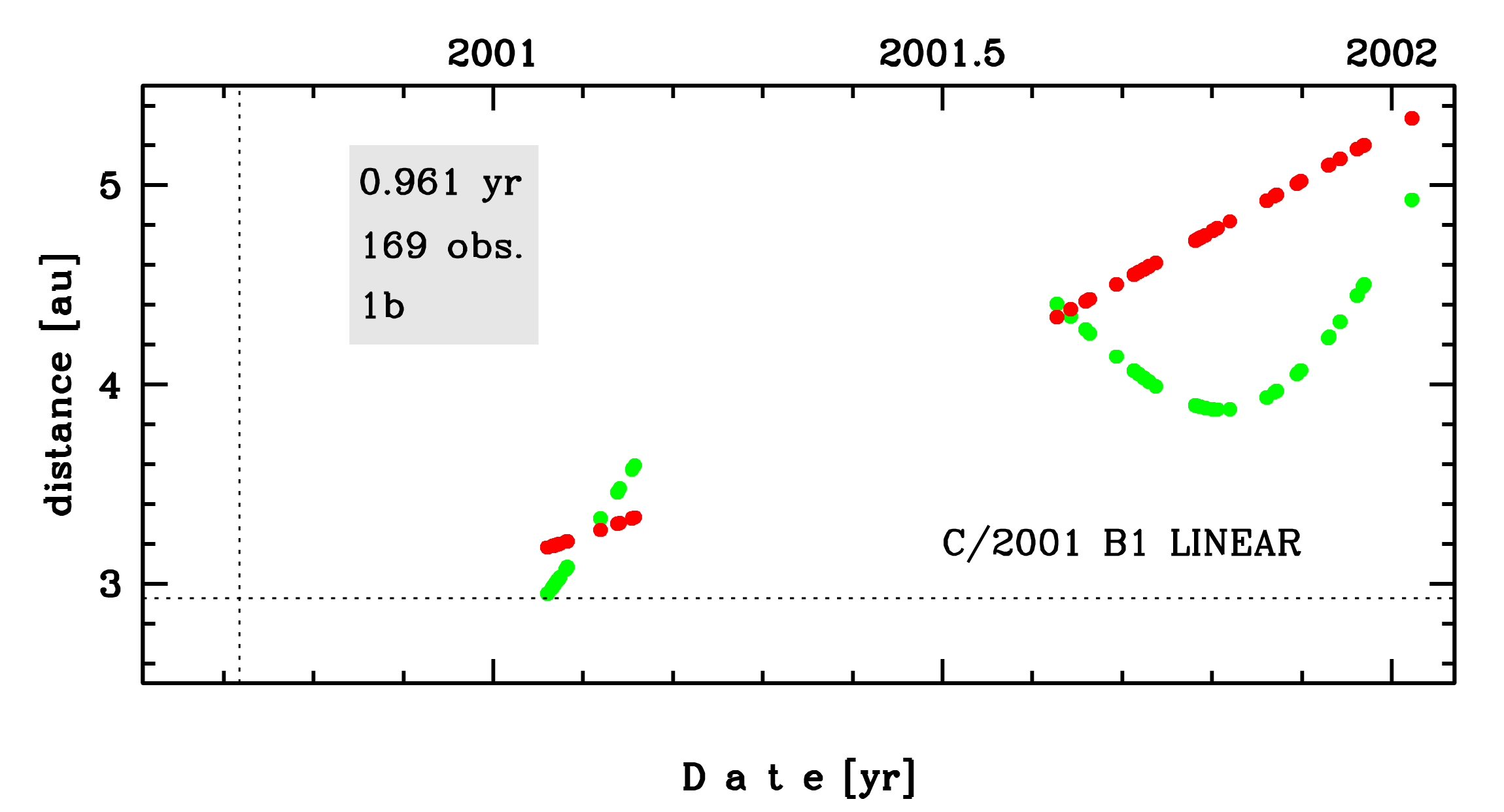C/2001 B1 LINEAR
more info
Comet C/2001 B1 was discovered on 22 January 2001 with Lincoln Laboratory Near-Earth Asteroid Research project, that is 4 months after its perihelion passage. It was observed until 8 January 2002.
Comet had its closest approach to the Earth on 5 December 2000 (2.544 au), 2.5 months after its perihelion passage and 1.5 month before discovery.
Solution given here is based on data spanning over 0.961 yr in a range of heliocentric distances from 3.18 au to 5.34 au.
This Oort spike comet suffers small planetary perturbations during its passage through the planetary system; however, these perturbations lead to escape the comet from the planetary zone on a hyperbolic orbit (see future barycentric orbits).
See also Królikowska 2020.
Comet had its closest approach to the Earth on 5 December 2000 (2.544 au), 2.5 months after its perihelion passage and 1.5 month before discovery.
Solution given here is based on data spanning over 0.961 yr in a range of heliocentric distances from 3.18 au to 5.34 au.
This Oort spike comet suffers small planetary perturbations during its passage through the planetary system; however, these perturbations lead to escape the comet from the planetary zone on a hyperbolic orbit (see future barycentric orbits).
See also Królikowska 2020.
| solution description | ||
|---|---|---|
| number of observations | 169 | |
| data interval | 2001 01 22 – 2002 01 08 | |
| data type | observed only after perihelion (POST) | |
| data arc selection | entire data set (STD) | |
| range of heliocentric distances | 3.18 au – 5.34au | |
| detectability of NG effects in the comet's motion | NG effects not determinable | |
| type of model of motion | GR - gravitational orbit | |
| data weighting | YES | |
| number of residuals | 332 | |
| RMS [arcseconds] | 0.57 | |
| orbit quality class | 1b | |
| orbital elements (heliocentric ecliptic J2000) | ||
|---|---|---|
| Epoch | 2000 09 13 | |
| perihelion date | 2000 09 19.28619935 | ± 0.00071655 |
| perihelion distance [au] | 2.92799769 | ± 0.00001321 |
| eccentricity | 1.00054894 | ± 0.00000570 |
| argument of perihelion [°] | 284.814495 | ± 0.000344 |
| ascending node [°] | 49.831524 | ± 0.000013 |
| inclination [°] | 104.134303 | ± 0.000081 |
| reciprocal semi-major axis [10-6 au-1] | -187.48 | ± 1.95 |
